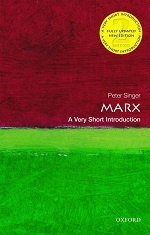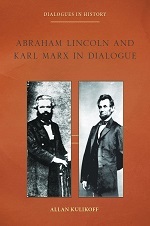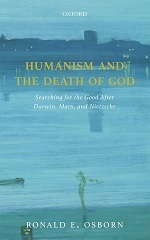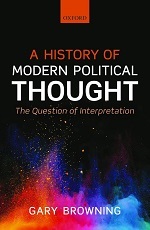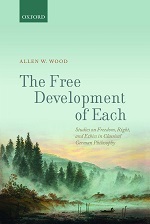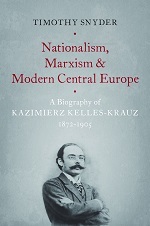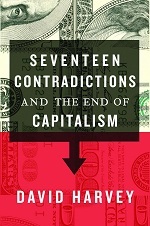Oxford University Press's Blog, page 252
May 28, 2018
Mind-body connection: a psychosomatic approach to women’s health
For millennia, medicine has been applied towards three main areas of the human condition: the mind, the body, and the spirit. Traditional Chinese medicine was similar to ancient Indian medicine in that it sought to create a holistic approach to treating illness, and recognised the contributions of psychological and social aspects in disease management. However, in modern Western medicine the profound interplay between the mind and the body is often ignored, and within the context of obstetrics of gynaecology, the complexities of female reproductive health not fully explored.
When disease such as gynaecological cancer strikes, the ravages of the malignancy are compounded by the effects of the treatment aimed at controlling the disease. While surgical procedures and chemotherapy can remove the offending tissue, the possible loss of fertility or reproductive organs can leave deep emotional scars on a woman’s psyche. It is only recently that the importance of acknowledging the psychosocial aspects of disease in women’s health has begun to come to the fore.
In the video series below, Dr Mira Lal explains what a psychosomatic approach to obstetrics and gynaecology entails, and discusses the important issues surrounding female reproductive health today—from IVF to the current scandal surrounding vaginal mesh surgery.
What is a psychosomatic approach to obstetrics and gynaecology?
What are the important issues surrounding female health today?
What is the psychological impact of infertility?
Fertility treatment: IVF and beyond
Featured image credit: “A poor woman in childbirth being watched by her husband” by Ary Scheffer. CC BY 4.0 via Wellcome Images .
The post Mind-body connection: a psychosomatic approach to women’s health appeared first on OUPblog.

Which law applies to adjudicate litigation with a foreign element?
We live in a rapidly changing world with the constant presence of so-called “foreign elements” in legal cases. Take, for example, a car accident between an Ontario resident and a New York resident that took place in Mexico, or a contract signed in Japan between English and German residents with respect to delivery of goods in Brazil. Given the multitude of “foreign elements” in the factual bases of these cases, which state’s law should the domestic court apply to adjudicate the litigation? Should this be Ontario, New York, Mexico, English, German, Japanese, Brazilian law or even some other?
The presence of a “foreign element” within the factual basis of a case is only becoming more common. With the complex web of international business and commerce, and growing cross-border tourism, it would be safe to say that soon the majority of cases in the world will have some foreign element within their factual basis. Commonly, the litigating parties do not reside in the same place or the goods are manufactured in different places, and the degree of cross-border activity is rapidly increasing. Furthermore, in the era of the internet and such cross-border phenomena as online contracts and online defamation, the presence of “foreign elements” seems to be an inherent part of litigation.
The question of the applicable law to govern litigation including a “foreign element” is still perplexing. The easiest solution would probably be to say that the domestic courts should always apply their own law. Thus, the English courts shall apply always the English law. And the Brazilian court shall always apply the Brazilian law. Yet, this application of domestic law seems to be somewhat unfair to the parties and frequently defeats their reasonable expectations. Thus, for example, the plaintiff may acquire jurisdiction over the defendant based merely on the defendant’s then-current residence, which can be entirely irrelevant to the place of the parties’ interaction, the place of the parties’ business, and the place of their residence at the time of their interaction. How can a defendant’s residence in Brazil be relevant to the factual situation in which the parties have signed a contract in Germany with respect to the delivery of goods in Germany? Why should a Brazilian court apply Brazilian law to circumstances that seem completely unrelated to Brazil?
In the era of the internet and such cross-border phenomena as online contracts and online defamation, the presence of “foreign elements” seems to be an inherent part of litigation.
To add a further degree of complexity, one may inquire about the status of a popular practice according to which the parties agree between them on the identity of the applied law. Consider a contract between English and German residents signed in Japan with respect to delivery of goods in Brazil. Can the parties stipulate in their contract that their potential future dispute shall be governed by Ontario contract law? Furthermore, would it be possible for the parties to agree on so-called “non-state” law (such as the various religious laws and other substantive law provisions) which do not represent a law of any state, and yet seem to be substantive enough to provide a framework for adjudication? Finally, it is not clear how it is possible at all for parties to impose their choice of applicable law on the domestic adjudicative tribunal, perhaps irrespective of its own rules and even its own policies?
What is interesting is that despite the myriad of terms and titles, one can trace within the various systems an emerging consensus with respect to the question of which law applies in the case of a “foreign element.” Despite the differences in terminology and labels, one can argue that the various systems (including the United States, Canada, Europe, China and Australia) have expressed their general antagonism towards the application of the above-mentioned domestic laws as key to tracking the identity of the applicable law in cross-border litigation. Instead of the application of the domestic law, it would appear that a careful analysis of various rules, doctrines, concepts and principles within various systems reveals a common ground amongst the systems. Labels aside, this common ground lies elsewhere and has nothing to do with the application of domestic law.
Specifically, the following three key points of emerging consensus can be identified. First, it would appear that the systems generally honour the above-mentioned ability of the parties to agree on the identity of the applied law. This ability represents the autonomy of the parties and illustrates the deep connection between the parties’ choice, public legal institutions, and their products. Second, many legal systems tend to agree that in circumstances when the analysis of the entire picture of the parties’ interaction clearly refers to a certain place, the place of that state would apply as a reflection of the parties’ reasonable expectations. Thus, for example, it would be reasonable to favour the application of Ontario law in the case of a car accident between an Ontario resident and New York resident that has taken place in Ontario. Finally, it seems to be traceable within the various systems that whatever the analysis of the various foreign elements may lead to, or whatever the litigating parties have agreed to, in certain highly exceptional circumstances the adjudicative tribunals have the discretion to refuse the application of foreign law. These exceptions underlie the transnational aspect of the litigation process, which trumps the ordinary mechanics of various foreign elements and the parties’ choice.
Indeed, the presence of a foreign element within contemporary and future litigation has been escalating. While the solution of mere application of domestic law seems to be an inadequate solution, one can argue that a remarkable consensus has been achieved among various systems as to the mechanics to identify the framework to adjudicate parties’ disputes. This consensus reflects the transnational character of such notions as party autonomy, parties’ reasonable expectations and the departure from ordinary process in exceptional circumstances. The future of litigation with a foreign element seems to be bright and fairly uniform.
Featured image credit: Courthouse by mbraun0223. CC0 via Pixabay .
The post Which law applies to adjudicate litigation with a foreign element? appeared first on OUPblog.

May 27, 2018
Thomas Kuhn and the T. S. Kuhn Archives at MIT
After I completed a book on Thomas Kuhn, the author of Structure of Scientific Revolutions, I thought I knew a lot about him. In my book, I argue that Kuhn’s recent, less frequently read work is key to understanding his views. Then I began to look in detail at Kuhn’s past and the influence his early work had in fields other than philosophy of science. I came across an intriguing and unexpected remark by Thomas Walker, a political scientist, in Perspectives on Politics. Walker reports that “while feeding his pet monkeys in Princeton Thomas Kuhn remarked how social scientists regularly misappropriated his idea of paradigms.” Pet monkeys? I had to know: How many pet monkeys did Kuhn have in his office?
Around this time, I began conducting research in the Thomas S. Kuhn Archives at the Massachusetts Institute of Technology. The Special Collections Library has about 26 file boxes of letters, lecture notes, drafts of papers, and other documents, which Kuhn gave to the Library after he retired. I had visited the collection twice before, for week-long visits, but in 2015-2016, with a Visiting Scholar appointment in the Department of Linguistics and Philosophy at MIT, I had four months of regular access to the collection. This was fantastic!
These papers, lectures notes, and letters are valuable resources for reconstructing Kuhn’s thought-processes and testing our pet hypotheses about what did and did not influence Kuhn as he wrote one of the most original and influential books of the 20th century. There is, for example, a notebook he used in the late 1940s, documenting what he was reading and his thoughts on what he was reading. Along with reading W. V. Quine, A. J. Ayer, and Bertrand Russell, he read Max Weber. There is also a letter from the early 1950s from Philipp Frank, one of the original members of the Vienna Circle, on the prospects of assembling some sort of group of academics to foster sociological studies of science. Kuhn’s detailed response to Frank was never posted. And there is a series of quite warm letters written in the 1960s between Kuhn and Margaret Masterman. Masterman is famous for two reasons. She was present at the famous meeting of the Moral Sciences Club at Cambridge in 1946 where Karl Popper was the invited speaker, and Ludwig Wittgenstein allegedly threatened Popper with a fireplace poker over some sort of philosophical disagreement. And, in the 1960s, while hospitalized, Masterman counted all the different ways in which Kuhn used the term “paradigm” in Structure. She counted 21 different uses of the term! No wonder the term proved to be so fertile.
Also included in the Archives is a vast collection of letters between Kuhn and many readers of Structure—psychologists, sociologists, scientists, students, businessmen, etc. There are, for example, exchanges with two economists who would later win “Nobel Prizes in Economics,” Wassily Leontif and George Stigler. The exchange takes up the question of whether the cycle of development that Kuhn claims describes the development of the natural sciences accurately describes what happens in economics. There are also many letters from adoring fans expressing their appreciation for Kuhn’s insights, and some wanting to share their own (perhaps equally insightful!) ideas with him. What is remarkable is that Kuhn responded to so many of these letters.
 Image credit: Portrait of the philosopher of science Thomas Samuel Kuhn by davi.trip. CC BY-SA 4.0 via Wikimedia Commons.
Image credit: Portrait of the philosopher of science Thomas Samuel Kuhn by davi.trip. CC BY-SA 4.0 via Wikimedia Commons.Kuhn’s lecture notes are also quite intriguing. Some are collected together on small cards, meticulously outlining the path of his projected lecture. Thumbing through a few sets of these I gained some insight into why he took so long to complete the manuscript for Structure, and why he never managed to complete his final much-anticipated book. On the back of a number of cards are very critical remarks about how the lecture went, including remarks about what he would not do again next time. He held himself to the highest standards. At times, they seemed paralyzing.
The variety of items in the collection is astounding. There are documents about his salary at various institutions (he was paid $25,000 at Princeton in 1969), grants applications, invitations to speak, etc. All of these provide valuable insight into the nature of the person who has made paradigm changes a part of our way of thinking about science and thought in general.
I am convinced that these resources may be the key to redirecting scholarship on Kuhn and his influences. Currently, many scholars writing about Kuhn and the development of his ideas are examining the influences of the broader culture in which he worked, on the quite plausible assumption that we all are products of our cultural milieu. Clearly, for example, Kuhn was influenced by the Cold War, especially given his close relationship with James B. Conant, then-President of Harvard, who was himself involved in the war efforts in the Second World War. To use an out-dated term, these are externalist histories. But Kuhn was himself committed to writing internalist histories. In a reflective turn, we stand to gain some deep insight into the author and his thoughts if we examine with greater care the intellectual influences on Kuhn.
Incidentally, I didn’t find anything about the monkeys in the archives. There is no mention of them in the correspondence I have read. There is not even a receipt for food. Fortunately, though, I had the opportunity to pursue the question of the monkeys with Kuhn’s daughter, Sarah. There was only one monkey. Walker’s remark was just hyperbole. But apparently, at some point, the monkey went to live with Wittgenstein’s niece. Thus there is still much to learn about the elusive man who gave us the notion of paradigm change.
Featured image credit: Lessons by kubiwka. CC0 via Pixabay.
The post Thomas Kuhn and the T. S. Kuhn Archives at MIT appeared first on OUPblog.

Investment law leads to more investment: A faulty premise?
If a government ratifies investment treaties and provides foreigners with access to investor-state arbitration, they will receive additional foreign investment. This has been the premise of investment law for over 50 years. Is it true? Two decades of studies testing this premise have been inconclusive (as Bonnitcha, Poulsen, and Waibel summarize). Since statistics on foreign investment are notoriously unreliable, they are unlikely to provide a clear answer anytime soon.
We can, however, answer a slightly different question: when officials drafted investment treaties and arbitration, did they expect them to facilitate more investment? The answer that emerges from internal discussions among officials in the UK and the US is clear: no.
American and British officials did not expect additional investment
In fact, American and British officials supported treaties and arbitration because they would not lead to additional investment. For decades after World War II, the British government faced a balance of payments problem, and was unwilling to facilitate outward investment. In 1967, a British official explained how the government assessed proposals:
[I]nsofar as they protect existing investment, they are welcome, insofar as they stimulate new investment, they are unwelcome. The balance of our interests determines our attitude to each project. In the present case [the ICSID Convention] our view has been that the balance works to our advantage since we do not expect the existence of the Centre to give any major stimulus to new investment at a rate in the short term (Letter from W. S. Ryrie to J. M. Stevens, January 1967).
Similarly, the American government began exploring whether or not to initiate a bilateral investment treaty (BIT) program in the late 1970s, when the US government’s policy was investment neutrality—equal inflows and outflows of investment. American officials went out of their way to say that the treaties would not promote investment, because they feared labor unions would oppose a government that promoted outflows of investment (Vandevelde p. 162). American officials believed that BITs “would not constitute a departure from the investment neutrality we seek” (Memo from Herbert J. Hansell and Julius L. Katz to Mr Cooper, August 1977). “No specific actions are required to promote investment,” they noted, and all treaty provisions are “directed at investment protection or dispute settlement” (Memo from Richard T. McCormack to Mr Wallis, October 1982). When the American government was serious about promoting outward investment, officials discussed other initiatives, like targeted tax concessions or political risk insurance.
Would investment law have a more ECHR-like balance without the premise of additional investment?
Yet a belief that investment treaties promoted investment was cultivated, especially among potential treaty partners. After meetings in six European countries in 1977, an American official marveled at the dual messages: “the ‘protection’ function of the [treaties] is stressed at home while the ‘promotion’ aspect is stressed with the potential treaty partner” (Memo from Stephen Bond to the Files, July 1977). Promotion was emphasized to certain audiences, but not because there was evidence of it.
Impact assessments: conspicuously absent
The impact of investment treaties has long been assumed rather than assessed. While in trade negotiations, governments often produce impact studies that galvanize legislative debate and wider public discussion, impact assessments were usually absent from investment treaty negotiations.
Even international organizations known for producing economic data have avoided assessing the impact of investment treaties. Despite having a research department with more expertise regarding investment statistics than any university, and despite being involved with investor-state arbitration since the 1960s, the World Bank has never produced evidence that investment law facilitates investment. The first and only statistical paper from the World Bank found “little evidence that BITs have stimulated additional investment.”
Investment law without additional investment
For governments seeking to attract investment, treaties and arbitration were presented using a logic of consequences: give foreign investors additional rights and you will receive additional investment. But what if there is no additional investment?
What if governments approached investment law using a logic of appropriateness—in which laws are followed because they are seen as natural, right, and legitimate, not because of an external reward? What rights would governments give foreign investors then?
This is not a speculative question: it is exactly what governments did in Article 1 Protocol 1 of the European Convention of Human Rights (ECHR). In fact, the right to property in the ECHR and the first BITs were drafted in the same years, by the same conservative European governments. Yet they are markedly different. Article 1 Protocol 1 was built to balance private property rights with the public interest, and refining this balance in the crucible of complex, controversial cases has helped define the European Court of Human Rights (Article 1 Protocol 1 is the second most litigated ECHR provision).
Governments do not uphold the ECHR right to property because they hope to receive additional investment by doing so. They uphold this right because, by and large, it seems appropriate. Would investment law have a more ECHR-like balance without the premise of additional investment?
Featured image credit: European Court of Justice (ECJ) in Luxembourg with flags by Cédric Puisney. CC-BY-2.0 via Wikimedia Commons.
The post Investment law leads to more investment: A faulty premise? appeared first on OUPblog.

Karl Marx: A Reading List
To celebrate the bicentenary of Karl Marx’s birthday this month, we present a Marx reading list for general readers, scholars, and students interested in Marxism, German Philosophy, and the history of social and political thoughts, including Karl Marx’s classics texts.
Although Marx was born in the early nineteenth century, his theories and critique of capitalist bourgeois society remain dynamic and relevant for 21st century for their insights into politics and the problem of capitalism. The many reinterpretations of Marx are a testament to his enduring appeal and the originality of his ideas and vision.
Capital: An Abridged Edition, by Karl Marx. Edited with an introduction by David McLellan
Capital combines vivid historical detail with a bitter denunciation of mid-Victorian capitalist society. It remains the most influential work in social science in the twentieth century.
The Communist Manifesto, by Karl Marx and Friedrich Engels. Edited with an introduction and notes by David McLellan
Co-written by Karl Marx and Friedrich Engels, The Communist Manifesto is one of the most influential pieces of political propaganda ever written. As a foundational text of the Marxist movement, it is a condensed account of the whole Marxist vision.
Marx: A Very Short Introduction, by Peter Singer
Peter Singer, one of the best-known philosophers of the twentieth century, offers a concise introduction to Karl Marx and his theories in plain English for non-specialists. He sees Marx as a philosopher primarily concerned with human freedom, rather than as an economist or a social scientist, and concludes with an assessment of Marx’s legacy.
Why Read Marx Today?, by Jonathan Wolff
This fresh and provocative book reinstates Marx as an important current critic of current society and connects Marx’s main ideas with wider concerns about culture and society.
Abraham Lincoln and Karl Marx in Dialogue, by Allan Kulikoff
Abraham Lincoln and Karl Marx might appear strange bedfellows, the president and the intellectual revolutionary. Yet they shared an abiding interest in labour, labour relations, and slavery. This volume puts the two of them in dialogue, using linked, short passages from their writings, and thereby uncovers their agreements and disagreements about this fundamental issue.
Humanism and the Death of God: Searching for the Good After Darwin, Marx, and Nietzsche, by Ronald E. Osborn
For anyone interested in exploring the moral implications of philosophical naturalism, this study argues that certain humanistic values, including belief in human rights and the inherent dignity and value of human persons as persons, are jeopardized by anti-religious forms of naturalism. Osborn explores some of the most influential thinkers on anti-religious forms of naturalism: Darwin, Marx, and Nietzsche.
A History of Modern Political Thought: The Question of Interpretation, by Gary Browning
This book analyses the ways of interpreting modern political thought and interpretations of particular modern political thinkers. It also takes a look at prominent schemes of interpretation such as deconstruction, hermeneutics, and contextualism and provides a critical reading of how particular thinkers including Machiavelli, Hobbes, Locke, Hegel, Rousseau, Marx, Bentham, Mill, Nietzsche, and Beauvoir are interpreted in the light of these schemes.
The Free Development of Each: Studies on Freedom, Right, and Ethics in Classical German Philosophy, by Allen W. Wood
The Free Development of Each collects twelve essays on the history of German philosophy by Allen W. Wood, one of the leading scholars in the field. They explore moral philosophy, politics, society, and history in the works of Kant, Herder, Fichte, Hegel, and Marx, and share the basic theme of freedom, as it appears in morality and in politics.
Demolition on Karl Marx Square: Cultural Barbarism and the People’s State in 1968, by Andrew Demshuk
The 1968 demolition of Leipzig’s medieval University Church represents an essential turning point in relations between Communist authorities and the people they claimed to serve. The largest East German protest between the 1953 Uprising and 1989 Revolution, this intimate story clarifies how the “dictatorial” system operated and lost public belief.
The Oxford Handbook of German Philosophy in the Nineteenth Century, edited by Michael N. Forster and Kristin Gjesdal
This volume constitutes the first collective critical study of German philosophy in the nineteenth century. A team of leading experts explore the influential figures associated with the period, including Hegel, Kierkegaard, Nietzsche, and Frege, and provide fresh accounts of the philosophical movements and key debates with which they engaged.
Nationalism, Marxism, and Modern Central Europe: A Biography of Kazimierz Kelles-Krauz, 1872-1905, by Timothy Snyder
Timothy Snyder opens a new path in the understanding of modern nationalism and twentieth-century socialism by presenting the often overlooked life of Kazimierz Kelles-Krauz, an important Polish thinker at the beginning of the twentieth century.
The Ways of the World, by David Harvey
David Harvey is one of most famous Marxist intellectuals in the past half century, as well as one of the world’s most cited social scientists. Beginning in the early 1970s, with his trenchant and still-relevant book, Social Justice and the City, and through this day, Harvey has written numerous books and dozens of influential essays and articles on topics across issues in politics, culture, economics, and social justice. In The Ways of the World, Harvey has gathered his most important essays from the past four decades.
Seventeen Contradictions and the End of Capitalism, by David Harvey
Accessible and timely explanation of how capitalism will self-destruct, as well as an original prediction of what the coming post-capitalist age will look like.
Featured image: Karl Marx monument wall, Chemnitz by Daniel Teich. Public domain via Pixabay.
The post Karl Marx: A Reading List appeared first on OUPblog.

May 25, 2018
25 years of contemporary war crimes tribunals
Much as a single discovery can transform science, paradigm shifts in international law can emerge with astonishing speed. Twenty-five years ago, the UN Security Council sparked such a shift when it created a war crimes tribunal to punish those responsible for “ethnic cleansing” in the former Yugoslavia.
At first widely dismissed as a fig leaf for the UN’s failure to halt ethnic violence in the heart of Europe, the International Criminal Tribunal for the former Yugoslavia (ICTY), based in The Hague, soon became the leading edge in a new era of international justice. After a shaky start, it garnered global admiration as it revamped the law of humanity, born in Nuremberg in another moment of tectonic change. The Tribunal’s stature grew exponentially, too, when former Serbian dictator Slobodan Milošević was dispatched to The Hague in June 2001. Meanwhile, other tribunals were created in the wake of genocide in Rwanda and atrocities in Sierra Leone and elsewhere; in 2002, a permanent International Criminal Court (ICC) opened for business.
But in recent years, the great-power consensus underpinning this phenomenon has frayed. Several factors account for this, of which the most formidable have little to do with the merits of war crimes courts (see: veto by Russia and China of a draft resolution that would have referred Russian ally Syria to the ICC). One, however, may be growing doubts about the cost and value of global justice. True, skeptics note, the ICTY and other tribunals have generated path-breaking jurisprudence. But in the face of grievous violence in Syria and elsewhere, what good does that do?
Yet a closer look at the record of the ICTY, which closed in December after operating more than 24 years, suggests war crimes tribunals can have a profound impact—but not necessarily in the ways we expected. The challenge today is to know what they can deliver and, just as important, what tasks they are ill-suited to achieve.
What, then, does the ICTY’s record teach us?
First, and unexpectedly, the ICTY showed us how international tribunals can catalyze domestic prosecutions that would never have taken place otherwise. Years after it was launched, the Hague Tribunal made concerted efforts to shore up Bosnia’s judiciary, though hardly for enlightened reasons. Under pressure to wind up its work, Tribunal officials sought a partner to which it could send some of its cases. Although it made no similar effort in Serbia, whose wartime government had plunged the region into crisis, the ICTY catalyzed war crimes trials there without even trying. To its credit, the Tribunal’s Prosecutor seized the opportunity that emerged in both countries, pioneering new programs to bolster local war crimes institutions.
…the ICTY showed us how international tribunals can catalyze domestic prosecutions that would never have taken place otherwise.
These innovations are well worth emulating by the ICC, whose Statute contemplates a dynamic relationship with local courts. Such an investment could pay rich dividends: recent social science research suggests that domestic prosecutions for past depredations “have a strong and statistically significant” correlation with improved human rights conditions in countries recovering from horrific violence.
Second, we need to stop claiming international criminal courts will have a transformative impact on social beliefs (see, for example, U.S. Ambassador Madeleine Albright’s statement that “only the truth”—which the ICTY would establish—“can cleanse … ethnic and religious hatreds and begin the healing process” in the former Yugoslavia, or the first ICTY president’s description of the Tribunal as “a tool for promoting reconciliation and restoring true peace”). With nationalism on the rise in Serbia and Bosnia, it is abundantly clear the ICTY did not have this effect.
A rich body of social science literature helps us understand why we never should have expected it to—and why we did a disservice by claiming the ICTY would stimulate general acknowledgement of contested facts and remorse for past harms. Psychological dynamics that operate in the most prosaic spheres of human endeavor—in particular, a human propensity to discredit information that challenges our collective self-esteem, our habitual reliance on trusted sources to interpret reality, and our resistance to information at odds with established beliefs—were at play in post-Milošević Serbia and postwar Bosnia. Similar dynamics are likely to operate in many countries, where basic norms of human decency have been so thoroughly debased as to give rise to war crimes prosecutions.
This does not, however, mean war crimes trials are incapable of advancing social acknowledgment of past wrongs. In fact, during periods of robust engagement in Bosnia and Serbia by influential actors, like the United States and European Union, the ICTY’s work helped empower political reformists and advance accountability. It is now abundantly clear such engagement may be necessary far longer than most governments are inclined to provide it.
Third, and most important, international tribunals can deliver a precious measure of justice for those who endured grievous harm. To be sure, victims in Bosnia, which saw the highest levels of ethnic violence during the 1990s Yugoslav wars, recite a litany of criticisms of the ICTY’s performance: trials took too long, sentences were too short, some defendants transformed the courtroom into a platform for hateful propaganda, and on and on. But in their view, flaws in the Tribunal’s performance are not the same as failure in its mission. In research interviews over almost a decade, when I asked Bosnians if it was a mistake to have created the Tribunal, they virtually always responded without hesitation: “Of course not! Without the Tribunal we would never have received justice.” While difficult to capture in the hard metrics of impact analysis, this achievement could not be more precious.
Fifty-five years ago Hannah Arendt observed that, “the question most commonly asked about the Eichmann trial” in Jerusalem was, “What good does it do?” After 25 years of sustained efforts to prosecute contemporary war criminals, her response still rings true: “It will do justice.”
Featured image credit: ICTY Building by UN International Criminal Tribunal for the former Yugoslavia. CC BY 2.0 via Wikimedia Commons.
The post 25 years of contemporary war crimes tribunals appeared first on OUPblog.

How can research impact patients’ health in the “real world”?
As an academic researcher, my primary goal is to improve population health. I was trained in innovative study designs, rigorous analytic approaches, and taught that fidelity to the methods is of the utmost importance. However, it is just as important that patients actually use the programs that we design to improve their health. Unfortunately, the few health programs that actually make it into the community can take years—even decades—to get there. In order to improve health on a population level, we (academic researchers) need to rethink what defines the success of our research studies. We need to focus on designing practical studies so our programs can succeed in the “real world.” Implementation science is a field focused on increasing the number of evidence-based programs in clinical community settings. In the last decade, implementation science has seen an explosion of progress in terms of both quantity and quality.
My colleagues and I recently completed a series of projects where research and clinical staff spoke with patients over the phone to help them improve their chronic disease control. Trained study staff asked patients what made it challenging from them to take their medications and provided tailored support to help troubleshoot patients’ unique barriers. We called our original study CHANGE. It was designed to help African Americans who receive care at an academic medical center to take their medications more accurately and improve their chronic illness control. CHANGE improved medication taking, but did not improve patients’ blood pressure, cholesterol, or diabetes control.
We tested CHANGE in a medical center that routinely conducts research, but this is not the type of setting where most patients receive their care. Because the trial did not improve patients’ blood pressure, cholesterol, or diabetes, we had to consider whether we were really making a difference, and we thought we would have to use traditional academic theories to heavily revise the program before we could re-evaluate its success.
“…we thought we would have to use traditional academic theories to heavily revise the program before we could re-evaluate its success.
We were wrong.”
We were wrong. When we finished the CHANGE study, North Carolina had a primary care case management program serving low-income patients across several counties, and they needed an easily accessible solution to improve patients’ heart health. Even though CHANGE didn’t work perfectly in the research setting, the case management program was eager to work with us so they could use it for their patients. So, we started working with community clinics to adapt the program to fit their needs. These adaptations were based not on traditional scientific methods for program development, but instead were primarily chosen to meet each clinic’s needs while keeping the things that worked in CHANGE. For example, CHANGE was originally delivered by research staff members and, on a future iteration, was delivered by community health workers. Thus, we modified the content to address only issues that community health workers were prepared to address (e.g., removed information about managing medication side effects). We also changed the program for Medicare patients.
These adaptations and projects were not what we would have done in an academic context, but they worked. Not only did patients take their medicines more correctly in the original CHANGE study, but in the adaptations of CHANGE patients’ blood pressure, cholesterol, and diabetes improved. If we had only focused on making CHANGE “perfect,” we might have missed an opportunity to meet local needs and ultimately impact our community’s well-being. As researchers, we need to balance between making sure that we have enough evidence to change behaviors and being flexible enough to use a potential solution in real-time when a health need must be addressed.
We also learned several important research lessons. The research and clinical teams had different perspectives on key issues, including their expectations of “success.” The research team collected blood tests for research purposes so we could control the timing of the test and availability of result data. We (the research team) considered it a success when we saw improvements in blood pressure, cholesterol, and diabetes. In contrast, the community clinics collected blood tests only when patients needed them as part of their medical visits. Since CHANGE was provided over the telephone, many patients had relatively infrequent in-clinic encounters and did not get blood tests at consistent time intervals. While this was frustrating for the research team, it was completely acceptable to the community clinics because they viewed success as having access to an immediate solution to help their patients improve their blood pressure, cholesterol, and diabetes. The simple act of offering the program and sensing that patients were using it was valuable from the community clinics’ perspective. As researchers, this challenged us to recalibrate our measure of success and exclusively focus on what will have a meaningful impact on health.
The goal of health research should be to impact health in real world settings. Implementing our work in the communities where we live and work is an essential step in making that impact. This process can be uncomfortable because, unlike a clinical trial, the real world is difficult to control. Implementation science is a valid field, but it may require researchers to “get their hands dirty” by engaging with stakeholders and community partners in a new paradigm where everyone works together to improve the health of the community.
Featured image credit: Bonding by rawpixel. CC0 via Pixabay.
The post How can research impact patients’ health in the “real world”? appeared first on OUPblog.

May 24, 2018
Animal of the Month: 8 things threatening koalas [slideshow]
Despite being found only on one continent in the world, many of us appreciate everything koalas have to offer. We celebrated this endearing marsupial earlier this month on Wild Koala Day and have continued the revelries by providing interesting facts throughout the month. Highlighting this iconic Australian mammal is of continued importance as the wild population continues to decrease. According to some estimates, the koala population in Queensland between 1996 and 2016 decreased by as much as 80%. Here, we present some of the leading threats Phascolarctos cinereus face in their bid to survive in the modern world.

Chlamydia
A chlamydia epidemic is known to have killed a large number of koalas from 1887 to 1889. This pathogen has threatened the species ever since and has been shown to be the second most common cause for admission to rehabilitation centres.
Image: Mammal by TahliArtPhotography. Public domain via Pixabay.

Bushfires
Bushfires pose a huge threat to koalas, as they regularly destroy the animal’s native habitats, from which koalas are often unable to flee due to their slow movements. Fires have historically caused the human populations of Australia trouble, but with the industrialization that accompanied colonization, more opportunities arose for fires to get out of hand. In the mid-twentieth century technology was developed that has aided in fighting the worst of the fires, meaning that both human settlements as well as natural habitats are more often saved from complete destruction.
Image: Fire by sandid. Public domain via Pixabay.

Drought
Like other small mammals and marsupials, the koala is severely affected by the occurrence of drought. This weather phenomenon causes eucalyptus trees to lose leaves, meaning that there are fewer trees for the animals to feed off, leading to starvation and dehydration. Droughts are becoming more common as a result of climate change, consistently impacting negatively the koala population.
Winged words: the importance of birds in the ancient world
One good reason for studying the natural history of the ancient world is that it takes us outside the bubble we happen to be living in now, and enables us to look back at our world from the outside, as it were, and perhaps see it differently. As T.S. Elliot famously said, “the end of all our exploring will be to arrive where we started and know the place for the first time.”
It is estimated that in modern Britain we have lost more than half of all our wildlife in the last fifty years, a staggering statistic. This can largely be explained by relatively recent factors: intensive agriculture, urban development, environmental pollution, population growth and density and, to some extent, climate change. A few species have flourished, but in most cases the story is one of a sharp decline, affecting many much-loved species of great significance in our cultural history, such as the nightingale, skylark, cuckoo, turtle dove, curlew, and even the house sparrow.
By contrast, birds were a pervasive physical presence in the ancient world, in an abundance and diversity we can scarcely imagine today. Nightingales sang close to the centre of Athens; there were also hoopoes, cuckoos, kites, and wrynecks within city limits, along with a host of warblers, finches, and buntings; in the countryside beyond, there were eagles and vultures overhead, and the visible migrations of cranes, storks, and quail helped to mark the seasons; meanwhile in the towns, swallows, martins, and owls nested freely in and around the houses, temples, and public buildings.
 Image credit: A hoopoe, one of wild birds that made its home within the city limits of ancient Athens by Takashi Yanagisawa. CC0 via Pixabay.
Image credit: A hoopoe, one of wild birds that made its home within the city limits of ancient Athens by Takashi Yanagisawa. CC0 via Pixabay.These daily reminders of shared living-spaces were reflected in the popular culture. Birds were prominent in the earliest European art, for example in the vivid, naturalistic frescoes from Thera (Santorini) and Knossos in Crete. They were often depicted on coins, notably the Athenian “owls” (as they are still known in the numismatics trade), on domestic pottery and decorations, and on seals and in sculpture, all of which are “texts” of a kind, with their own stories to tell. Moreover, nearly eighty different species of birds are depicted in the wall-paintings that survived the earthquake of AD 79 at Pompeii (a small Italian town about the size of Penzance).
They were there in the earliest European literature, too: Homer’s great epics (c. 700BC) are full of extended similes derived from the natural world, with birds predominating, while Hesiod invokes their behaviour and movements in calibrating the rhythms of the farming year and in weather-forecasting. A storyteller like Aesop could assume an easy familiarity in his audience with the thirty or so species of birds that are featured in his Fables. The comic playwright Aristophanes refers to at least seventy-five species in his plays and even has one called The Birds (first performed 414BC), in which he fantasises about a “cloud-cuckoo-land” intermediate between earth and heaven, which the citizens of Athens are buying up wings to visit in an outbreak of ornithomania (his word). And in a much more prosaic, academic register Aristotle (388-322BC) identified some 140 species of birds in his extensive zoological treatises.
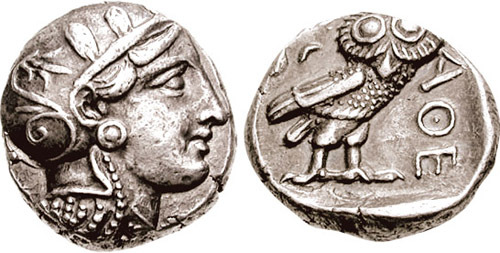 Image credit: Athenian tetradrachm C. 393-355 BC by Classical Numismatic Group, Inc. http://www.cngcoins.com. Creative Commons Attribution-Share Alike 3.0 Unported via Wikimedia Commons.
Image credit: Athenian tetradrachm C. 393-355 BC by Classical Numismatic Group, Inc. http://www.cngcoins.com. Creative Commons Attribution-Share Alike 3.0 Unported via Wikimedia Commons.As these statistics and references suggest, birds featured in every sphere of life. They were hunted, trapped, farmed, and eaten (both as everyday fare and in gourmet menus); they featured in medical remedies (many of them bizarre) and in sport (cockerels, partridges, and quail in staged competitions, and gruesome bouts involving ostriches and cranes in the Roman circus); they were prized as pets and as domestic amusements (particularly as mimics); they were given as courtship presents (“Say it with birds”); and they became embedded in everyday language as metaphors and proverbial sayings—some familiar (“Go to the crows”), others less so (“An eagle doesn’t catch flies”).
There was therefore a web of different, and often intimate, relationships between humans and birds, and it was natural that they would assume a symbolic importance in mythology, magic, folklore, and religion. In particular, they were regarded as possessing a special significance as intermediaries—the very word for “bird” in Greek also meant an “omen,” while our word “auspicious” comes from the Latin meaning “watching birds.” In Homer, eagles and other raptors are regarded as the principal omens, whose behaviour could validate some proposed course of action (usually military action), though in later contexts owls, corvids, herons, and woodpeckers could also be significant presences. In the Roman period, a systematic body of ritual and doctrine was constructed around the practice of augury, interpreting the flight of birds. It was this gift of flight that especially fitted birds for the role as messengers or guides. They were the “winged words” that could bridge the gap between the two realms of birds and humanity.
Featured image credit: “Flock of birds flying above the mountain during sunset” by Giani. CC0 via Pixabay .
The post Winged words: the importance of birds in the ancient world appeared first on OUPblog.

Encyclopedia editions in the digital age
When Grove Music Online launched its new website last December, it marked the beginning of a new era for the encyclopedic dictionary that serves as a primary reference tool for music scholars. Grove has been in continuous publication since 1879 and online since 2001, but the version of Grove that was published on December 2017 remade the dictionary for the first time as “digital first”—that is, with online prioritized over print—and is thus Grove’s first truly digital edition.
The word “edition” poses some difficulties in the digital era, however. We are used to thinking of editions of encyclopedias as the culmination of the work of many scholars over a period of many years. Each of the prior editions of Grove bears the stamp of the editor in chief who was responsible for it. I consult earlier editions frequently and each has its own character, its strengths and its weaknesses. Each carries the ideas of a team of scholars and reflects the scholarly issues of its time. The word “edition” then is both a way to define a type of scholarly ownership of a dictionary and to highlight the way it is a product of a historical moment marked in scholarly time with a finished publication.
When Grove was published in print, each edition represented the work of hundreds of editors and authors working together in a concentrated way to bring the contents of the dictionary into alignment with current scholarship. The primary work was the writing of new articles and the revision of existing ones. But the creating a new edition also included looking for ways to relate the articles to one another through cross-references and the index. These tasks still constitute the bulk of the work we do. The index has been translated on a digital platform into a type of metadata—that is, data about the data in the articles that defines and organizes the articles in various ways—called taxonomy. This taxonomy is now the way that the structure and priorities of Grove Music Online are revealed. It is, in effect, what defines the edition.
 Image credit: “GroveDictionaryofMandM-firstedition-1” of the first edition of the Grove Dictionary of Music, courtesy of Oxford University Press.
Image credit: “GroveDictionaryofMandM-firstedition-1” of the first edition of the Grove Dictionary of Music, courtesy of Oxford University Press.Taxonomies are basically a way of making lists of articles, but with an eye towards both organizing knowledge and also creating networks of information. They are complicated to write because they have to serve many purposes at once, some of which may be at odds with one another. On the site, the taxonomy’s main role is to help readers make sense of the articles that have already been published, so it needs to reflect the content we already have. For editors, the taxonomy also serves as a plan for the future—what are those areas we intend to find out about and how will they fit with the subjects already published in the dictionary?
Taxonomies also have to create networks effectively with other taxonomies. They need to reflect, at least in part, established scholarly fields. And they need to speak well to other taxonomies so that we can meet the expectations of scholars, and connect our data with that of other resources; some of the taxonomies we consulted for Grove included a standard classification system of musical instruments called the Hornbostel-Sachs system, well as the Library of Congress and taxonomies of related disciplines currently in use at Oxford University Press. In these senses, the taxonomy is less of a map than a blueprint.
Reference taxonomies can take several forms. They can be a flat list of categories—this type is best for taxonomies with fewer categories. They can, like Grove’s, be hierarchical, where categories can have subcategories. In either of these cases, it is possible to attach multiple categories to a single piece of data. Or they can be a type called an ontology (a term that exists at some degree of remove from its metaphysical sense) where in addition to assigning categories, you can assign relationships between them. Really large taxonomies like Grove’s may also contain taxonomical nodes to help people find what they’re looking for, effectively establishing a taxonomy of taxonomies.
 Image credit: “GMO_website” of the new Grove Music Online homepage, courtesy of Katie Bennett, Marketing Assistant at Oxford University Press.
Image credit: “GMO_website” of the new Grove Music Online homepage, courtesy of Katie Bennett, Marketing Assistant at Oxford University Press.The Grove taxonomy contains nodes for instruments, geography, eras, people (occupations), and places (place types). Each node is hierarchical. It does not, however, define relationships, so it is not an ontology. If I wanted to tag a biographical article of a violinist, I would add the appropriate tags from geography and eras to situate the figure in time and place, I’d code the occupation as performer>instrumentalist and I’d add a tag from the instruments taxonomy to reflect what type of instrumentalist she was: chordophones>bowed chordophones>violin. If Grove’s taxonomy were an ontology, I would also need to define a relationship between “instrumentalist” and “violin” to indicate “player of.”
Grove’s new edition has a number of goals, but one of the most critical is to more firmly define Grove’s area of coverage as global. Grove originated in the late 19th century as a dictionary of classical music and musicians primarily working in Europe with particular attention to Britain, where the dictionary originated. Grove’s taxonomy has changed over time with each new edition, but still reflected that Western Art Music was the principal area of focus in. For example, naming eras after periods that are most important to that field (e.g. Baroque), and in featuring much more detailed taxonomy for Western Music than for non-Western, where there was only a single category to cover the entire rest of the globe. This reflected an earlier period in scholarship that prioritized, in a music dictionary, regional coverage of non-Western music rather than other types of information like biographies of musicians. The new taxonomy adds year spans to era names, specific geographical categorization, and most importantly, provides topical categories that are not limited by region so that we can now find a list of, for instance, all of the articles about music and religion in all of its forms.
Adding the new taxonomy has allowed us to see gaps in our coverage in new ways and the information we get from the new taxonomy will define our publication plans for the foreseeable future. It is a bit like writing the index before the book. In the print era, the articles were written and the edition was created when complete, at publication. In the digital era, the edition is in a sense created first by creating a taxonomy that reflects and defines editorial priorities, and launching it on a website where the articles are published into it over time. We begin our work at the end and will continue with this edition until the vision of the taxonomy is satisfied. The articles will continue to grow and change, I hope for many years to come.
Featured image credit: “turntable-1337986_1280” by theglassdeck. CC0 via Pixabay.
The post Encyclopedia editions in the digital age appeared first on OUPblog.

Oxford University Press's Blog
- Oxford University Press's profile
- 238 followers




